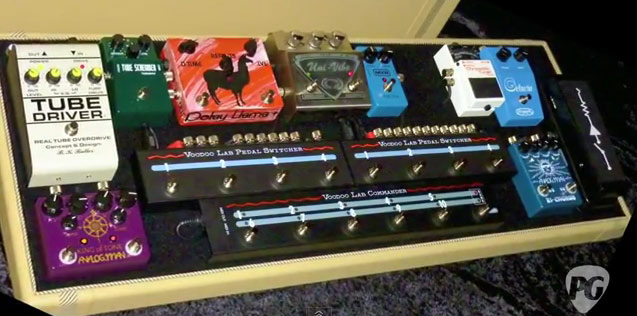
Here we should point out that there are 'overdrive' pedals, 'treble boost' pedals, 'fuzz pedals' and 'distortion' pedals all of which are designed to create a more 'distorted' guitar signal however we are interested here specificially in 'overdrive' pedals.


and in time the overdrive pedal was one of them!
#Bk butler tube driver pedalboar ideas plus#
The thing is that valve amplifiers are expensive to make plus what happens when you want a clean tone for some of your song and and overdriven tone for some of it? You could use two amplifiers at twice the expense using an AB box with a transformer isolated output to avoid ground loops, you could use a more expensive channel switching valve amplifier once they had become available, but there was another option. Youtube Video "The Story Of The Marshall Amp"ĭecades of tube amplifier design led to more and more valve distortion being made available in the preamp sections of these amplifiers, and to seperate controls being used for preamp and power amp sections allowing for the preamp tubes to be pushed into clipping whilst keeping the output volume lower. We would be technically and morally remiss at this point having looked at the 'clean' amps being pushed 'too hard' to stay clean type of overdrive by 'cranking', to miss the biggest change agent of all with regard to tube amplifier overdrive. Youtube Video: Marty McFly overloads his friend 'Doc' Brown's home-brew amplifier in the Hollywood Blockbuster 'Back to the Future' 1985. You took a master voume valve amplifier, turned all the knobs up until the signal was no longer produced cleanly, and hope that the amplfiier didn't 'malfunction'! In so far as overdriving a valve guitar amplifier is concerned, that was pretty much it.

No longer was it necessary to have a clean guitar sound to be cool, in fact quite the opposite became true, and it was realised that the guitar signal would similarly clip and therefore be distorted if the amplifier was turned up beyond it's ability to reproduce a signal cleanly.Ĭhuck Berry is perhaps one of the best known purveyors of the early overdriven valve guitar amplifier route to clipping distortion using valve amplifiers smaller than would be required to produce sounds at band level cleanly. Youtube Video: Ike Turner 'Rocket 88' 1951 One of the earliest 'distorted' guitar sounds on a released recording is considered to be Rocket 88 by Ike Turner which apparently occured due to the amplifier suffering accidental damage before a gig leading to a sound which everyone loved and which was then carried over to the record. The young post WWII generation had money in their pockets, a postive can do attitude and the new sounds coming out the radio were coined as being 'rock'n'roll'. However during the 1950s in the USA a new wave of music came along that threw out many of the of the old rules. Getting the sounds both clean and without feedback led to amplifier development and also to the semi-acoustic and solid body electric guitars being invented. Indeed the whole idea of the electric guitar pickup and valve guitar amplifier was simply to amplify the sound of the guitar in a big band setting as loudly and cleanly as possible to hold up to the acoustic volume of the drums and brass instruments used in the music of the 1920s-1940s. Once upon a time all electric guitar amplifiers were used within their operational limits (not overdriven) to produce essentially quite 'clean' sounding tones.


 0 kommentar(er)
0 kommentar(er)
